In the year 2000, roller coaster fans finally got to experience something that parks had touted for years but never really achieved: the true feeling of flight. On April 1, 2000, Stealth, the World’s First Flying Coaster, opened at Paramount’s Great America in Santa Clara, CA.
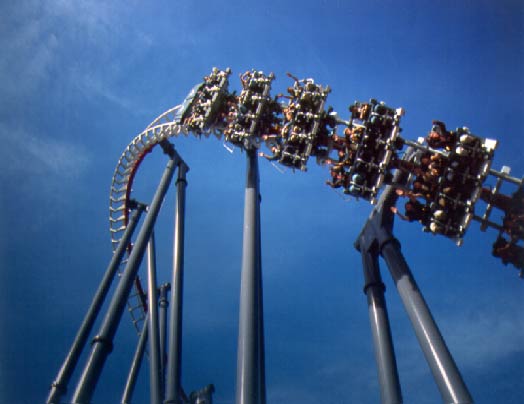
How a First of Its Kind Coaster Came to Great America
Northern California was in the middle of its own little coaster war at the turn of the century. Six Flags had recently acquired Marine World nearby and was adding thrill rides and coasters to their new park. So California’s Great America (Paramount’s Great America at the time) had to keep up. In 1998 Great America added the first Invertigo model coaster in the US. Marine World built Roar, a GCI woodie, in 1999. And in 2000, both parks would add record breaking new roller coasters.
Marine World opened Medusa, a giant floorless B&M with the worlds largest loop. But Great America decided to push bounds in a new way. The park would open the first true flying coaster in the world.
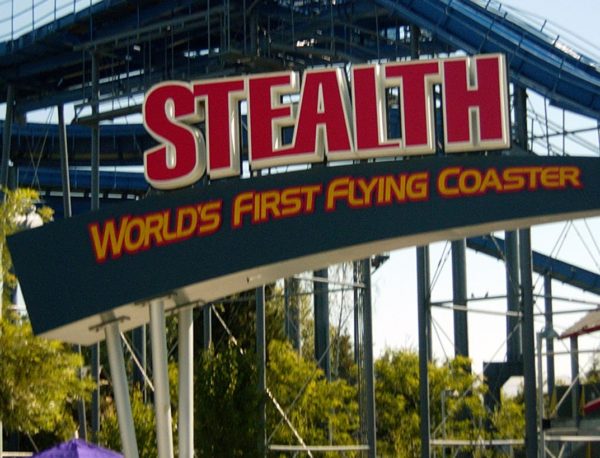
“Great America wanted to introduce an innovative new ride,” Bentley Hidalgo, a maintenance foreman with California’s Great America who was with the park back when Stealth opened, told me. “Stealth was a one-of-a-kind attraction…it gave guests a sensation of flying through the air.”
The ride manufacturer, Vekoma, also saw it as a chance to promote their new “Flying Dutchman” model.
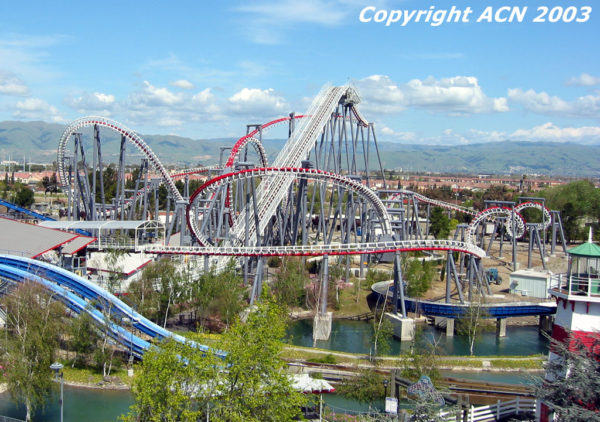
Courtesy American’s Coaster Network: https://www.americacoasters.com/Photos/?level=picture&id=1757
While lots of coaster designs claimed to give you a “feeling” of flight, including the floorless coaster opening at Six Flags Marine World, Stealth was the first to really do it. While inverted and floorless coasters let your feet dangle, you still sit upright in a seat. On Stealth you rode like Superman, lying on your belly. For the first time on a coaster, there was no seat under you.
Reactions to the Ride
Preview Day
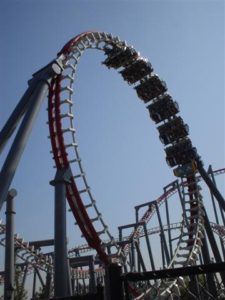
(Photo by Scott Greenwald, via Coasterbuzz.com)
“There was a lot of intrigue and anticipation surrounding Stealth, since it featured a completely unheard-of design when it was announced in 1999,” Danny Messinger, California’s Great America’s Digital Marketing Area Manager, explained.
The media preview for Stealth was held on March 15, 2000, covertly moved up to be one day before the preview scheduled for Medusa. That led to some fun shenanigan’s between the parks, including Six Flags hiring a bi-plane to tow a banner above Great America touting Medusa’s stats to the media and guests previewing Stealth.
“We think we have a better coaster,” Marine World spokeswoman Kristi Vonne told the San Jose Mercury news at the time. “We wanted to make sure anyone riding (Stealth) knows there’s a new taller, faster, longer, and better coaster.”
The rivalry between the parks didn’t seem to dampen the spirits of any riders, though.
“It’s Impossible to Explain How It Feels”
Norm Samuelson, an American Coaster Enthusiasts (ACE) member who rode Stealth during its media preview day explained to the Mercury News, “Remember when you were a kid and wanted to fly? This is it.”
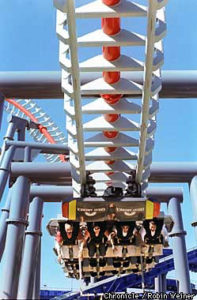
(photo by Robin Weiner courtesy SFgate.com)
“Stealth was very well received by our guests,” Messinger said. “Being such an innovative coaster, Stealth drew guests from all across the country—and coaster enthusiasts from around the world. Its first-of-its-kind design reaffirmed Great America’s status as a destination for enthusiasts.”
I certainly remember my first rides on it. While it wasn’t the biggest or fastest, and I found the restraints incredibly uncomfortable (especially while going up the lift hill on your back), there was something unmistakably cool about it. I can still vividly remember the segment where it dove over a little metal shed. The sensation of flying towards and over the roof of a building with nothing between you and it was something else.
David Escalante, PR Director for ACE at the time, also praised the ride. “At some points it really does feel like flying,” he told the Mercury. “I can’t compare it to anything else, it’s impossible to explain how it feels.”
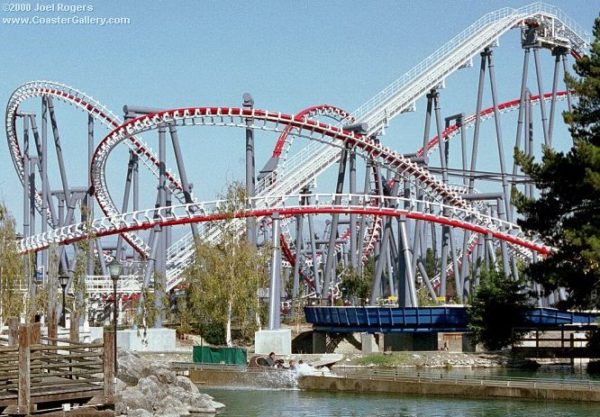
(courtesy CoasterGallery.com)
A Short Lived Coasters
Maintenance Issues and Removal
Of course, prototypes don’t always run smoothly.
“You’re unsure what types of challenges or issues you may encounter during the operation of any prototype attraction,” Hidalgo said. “One of the biggest difficulties was the electrical box. It monitored all of the restraints and locking devices that allowed the cars to pivot up and down. These components were traditionally off the train and in the electrical room. On Stealth, these components were instead on the train, and (they) experienced a lot of dynamic forces.”
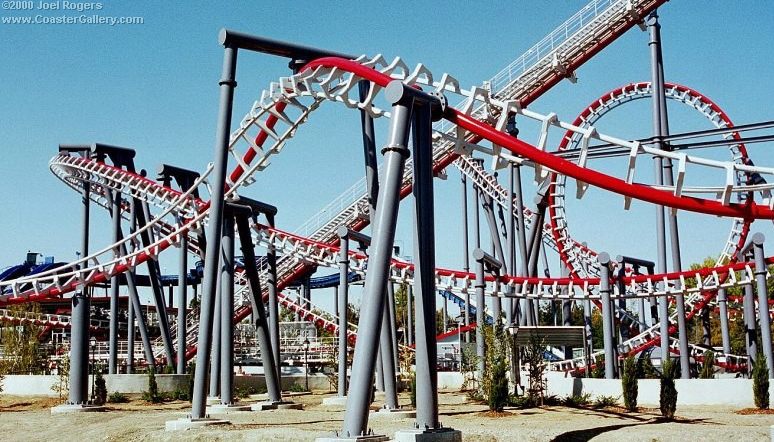
(courtesy Coastergallery.com)
At the end of the 2003 season, after just a few years, California’s Great America removed Stealth. It was the part of a steady roller coaster decline of Great America through the 2000s for coaster enthusiasts. The park lost three coasters from 2002 to 2010, and didn’t add any a new one until 2013.
A New Life Across the Country
But Stealth wasn’t lost completely. The ride relocated to Carowinds, as Star Trek themed ride, Borg Assimilator.
“We were able to relocate the attraction to our sister park, Carowinds, so the loss of Stealth at Great America was a win for our sister property,” Messinger explained.
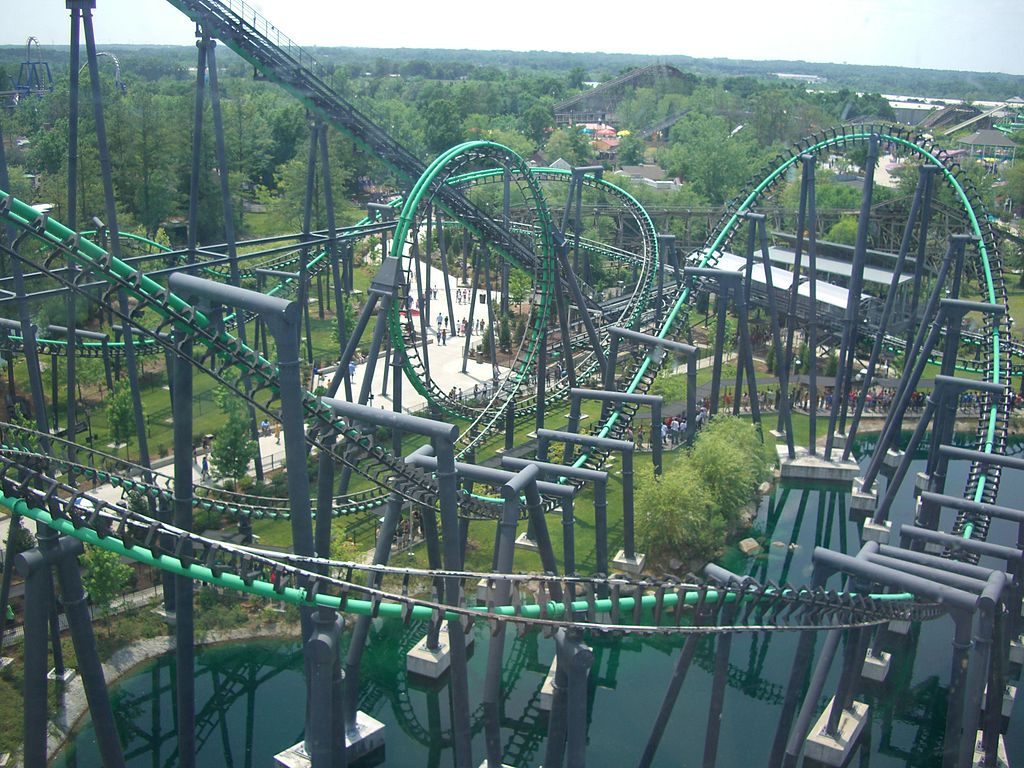
Stealth in its Borg Assimilator color scheme at Carowinds. (Coasterman1234 at en.wikipedia, CC BY-SA 3.0, via Wikimedia Commons)
The removal also included improvements to fix some of those prototype issues. The electrical system was re-designed, for example, addressing the problems Hidalgo described.
Steve Jackson, Director of Maintenance and Construction at Carowinds on Stealth added, “Carowinds was growing and needed a signature ride. So, someone came up with the idea to move the ride to the park and upgrade all the systems. Basically, reboot the ride in a new location and a new theme. It’s a signature coaster and increased attendance for multiple years. The ride is still very popular and it remains a right of passage for teenagers and adults alike.”
Stealth’s Legacy
Stealth was far from a perfect roller coaster. Like I mentioned above, I found the restraints really uncomfortable, and any time you were on your back —which was a surprisingly large part of the ride — I hated it. It wasn’t super long or super fast, but it did something completely innovative, that maybe didn’t even seem possible before it.
Vekoma built a couple of other, bigger, Flying Dutchman coasters after Stealth. Firehawk at Kings Island closed in 2018, but Batwing at Six Flags America still operates.
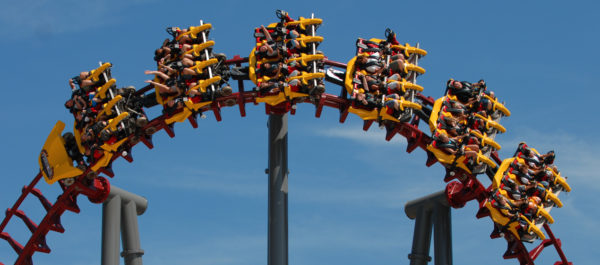
Firehawk at Kings Dominion was a bigger version of Stealth. It closed in 2018.
Stealth also surely paved the way for B&M to develop their own flying coaster models, like Air/Galactica, Tatsu, and Manta. And Vekoma just opened F.L.Y. at Phantasialand, a brand new, next-generation Flying Coaster that looks amazing.
You can even still see parts of Stealth at Great America that were reused in the water park. “The coaster sat right where the waterpark would be built. Eagle-eyed Great America history buffs will still see the old Stealth station used as part of the queue for the Mission Falls, Coastal Cruz and NorCal Wipeout waterslides in South Bay Shores. The area underneath the old station is used to house pumps for the slides.”
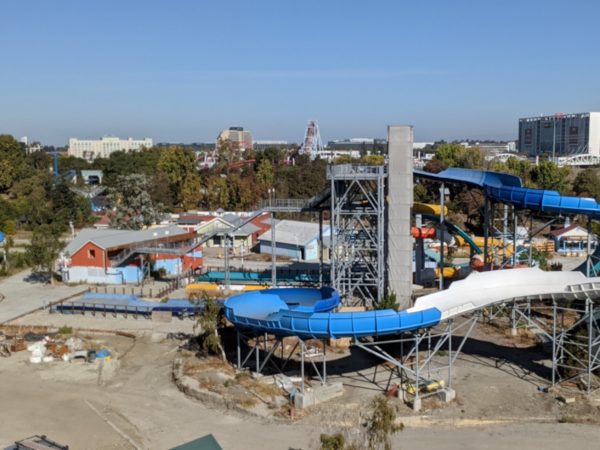
The red building on the left in this photo of South Bay Shores is the old Stealth station, now part of the water slide complex queue.
And of course, Stealth still lives on today at Carowinds as Nighthawk. It might not hold up as well compared to newer flying coasters that it led to, but as Carowinds’ Steve Jackson says, “It’s still the world’s first flying coaster and no one can take that away.”
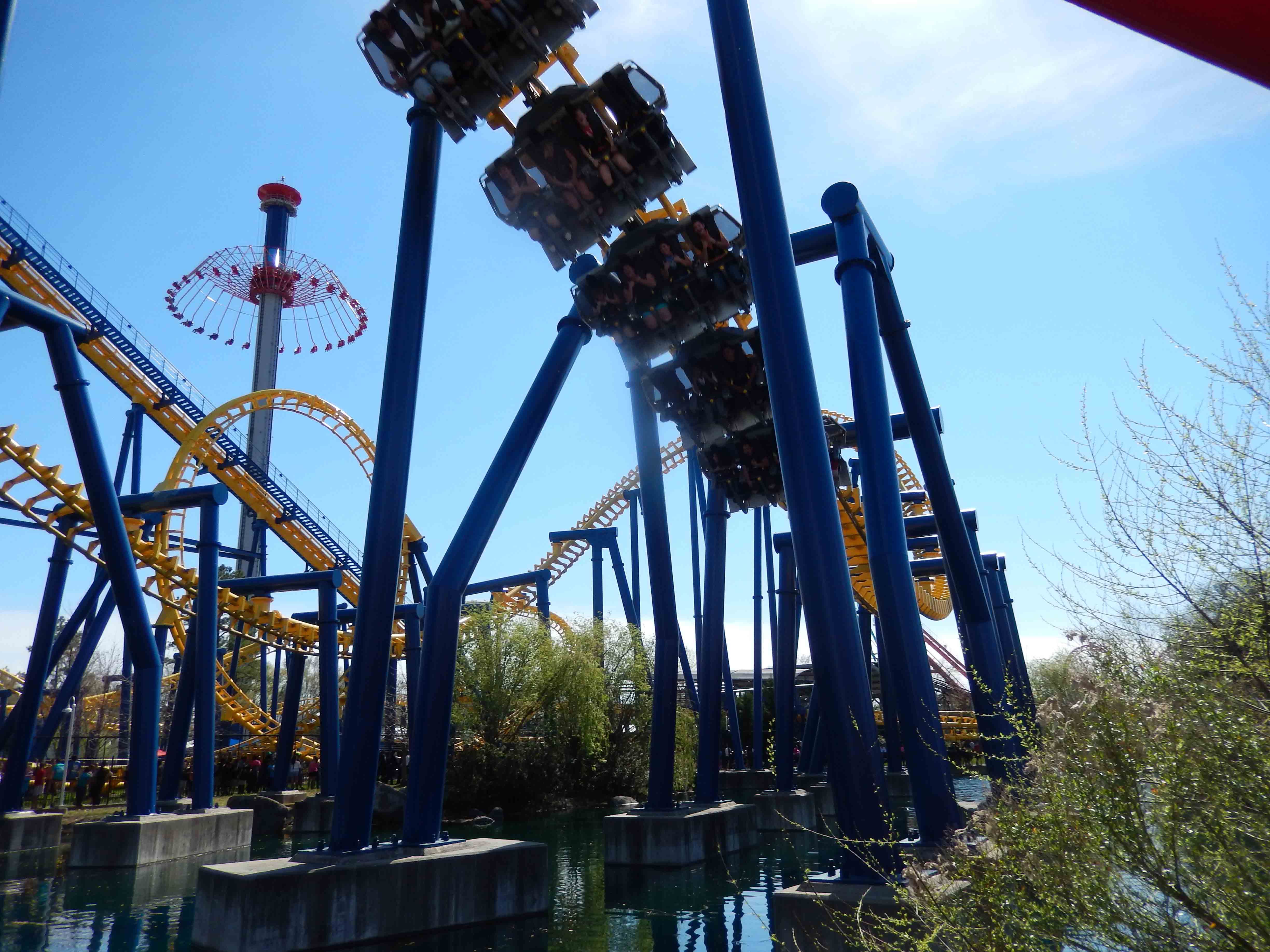
Stealth lives on today as Nighthawk at Carowinds.
Let us know if you remember Stealth from its brief life at California’s Great America, or what you think of it in its Carowinds form. And make sure to check out all the other coasters from our still on-going 20 in 2020 series!

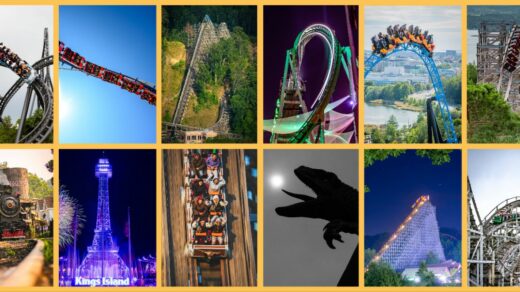

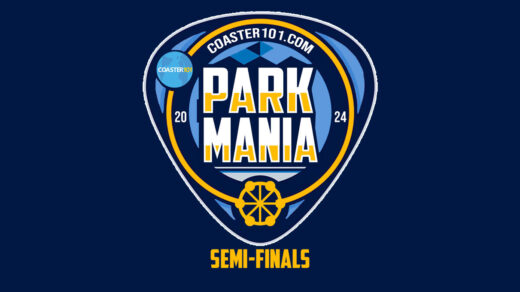





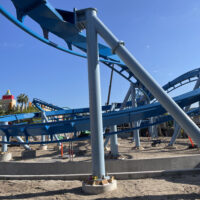





Rode this when I was probably 16 many times. My best friend and I would always laugh like crazy and couldn’t stop when the ride was over (it took awhile to get let off the ride) I don’t know what brought those emotions out but I still remember that to this day, almost 20 years later…